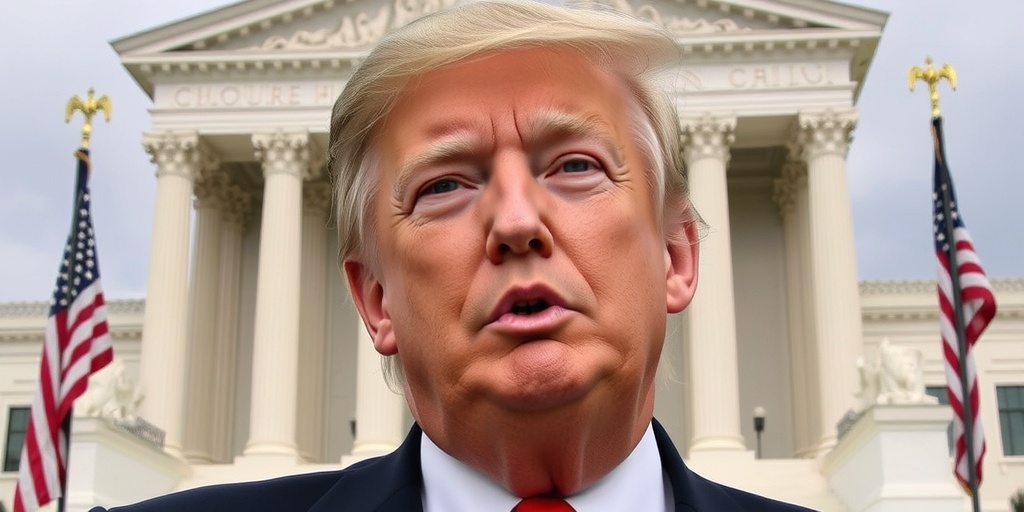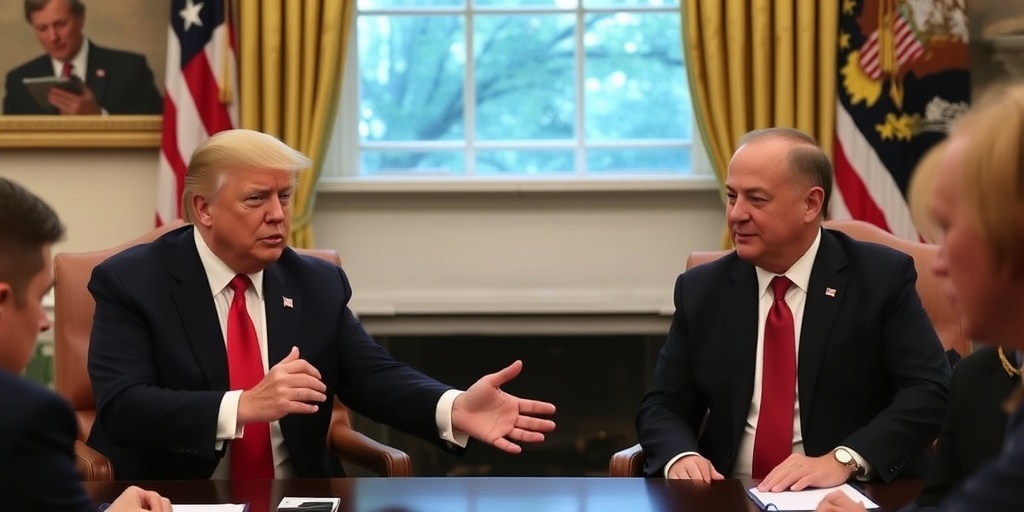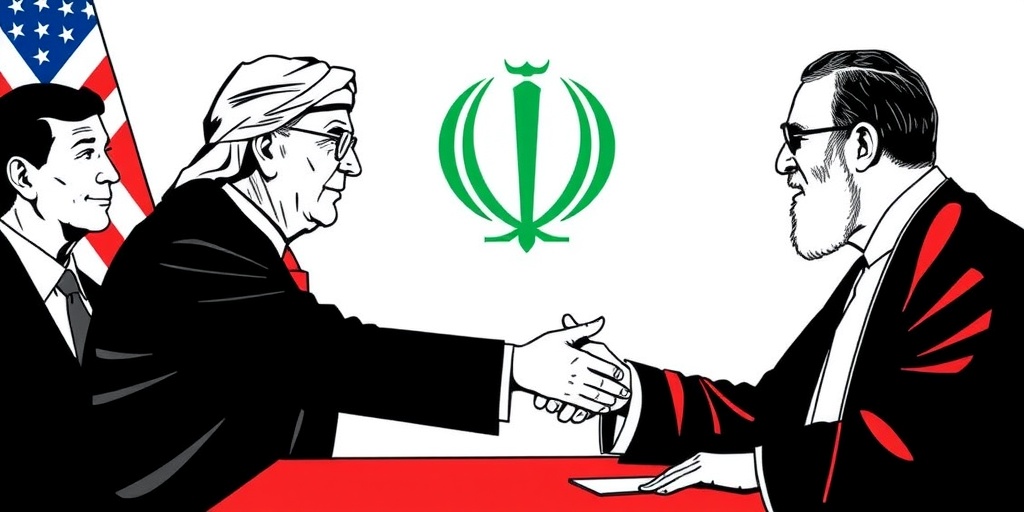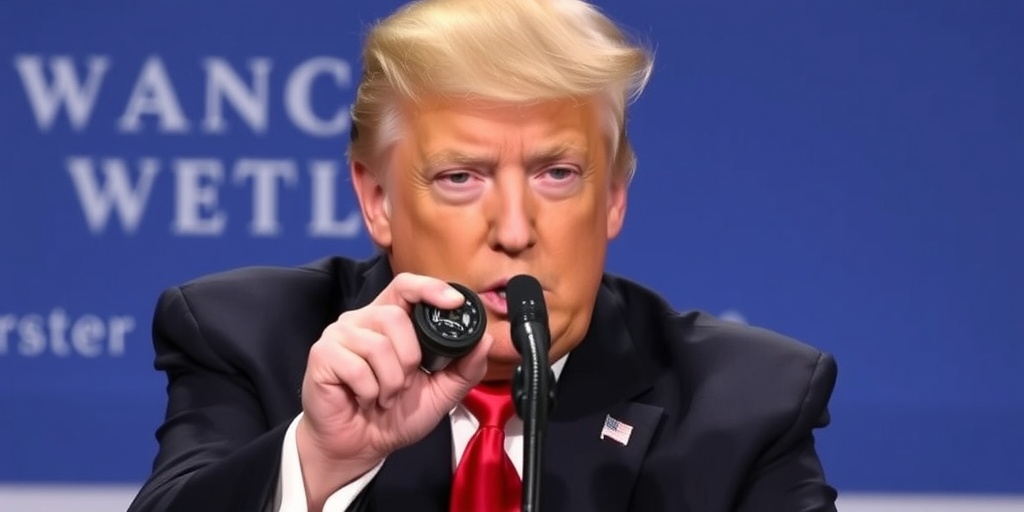Now Reading: Appeals Court Allows Trump to Fire Probationary Workers
-
01
Appeals Court Allows Trump to Fire Probationary Workers
Appeals Court Allows Trump to Fire Probationary Workers

Court Ruling Empowers Trump Administration to Fire Probationary Employees
In a significant legal development, the Trump administration has regained the latitude to terminate probationary employees, at least for the moment. This decision follows a 2-to-1 ruling by the U.S. Court of Appeals for the Fourth Circuit, which blocked a prior lower-court ruling in Maryland that had reinstated a large number of federal workers dismissed in February. The appeals court’s decision, announced on Wednesday, indicates a continuing legal battle surrounding the administration’s contentious approach to civil service employment.
The mass firing of these probationary employees represented one of the initial steps in President Trump’s wider initiative to dramatically reduce the size of the federal workforce and to overhaul or eliminate various federal offices and programs. This move is part of a broader strategy aimed at reshaping government operations. The legal status of those who were terminated has been under scrutiny, as disputes have arisen regarding whether these firings were conducted in accordance with the law.
Interestingly, the ruling from the Fourth Circuit came only a day after the U.S. Supreme Court intervened in a related case from California, which had imposed restrictions on the government’s ability to fire probationary employees. The Supreme Court’s decision has left federal authorities without any current court orders preventing them from dismissing probationary workers, marking a pivotal moment in the ongoing saga surrounding employment policies in the Trump administration.
Both courts focused their rulings on narrow legal questions regarding "standing" – a legal term referring to the ability of a party to demonstrate a sufficient connection to the legal challenge, thus granting them the right to sue. In California, nonprofit organizations contested the government’s actions, asserting that the firings affected the availability of services they relied on. In contrast, 19 states and the District of Columbia raised concerns in Maryland, claiming the government failed to provide adequate notice about personnel actions that would unavoidably lead to an uptick in unemployment benefits.
The implications of the recent appellate ruling for the thousands of probationary employees are murky. Many of these workers, who had been reinstated following earlier district court orders, are now left in a state of uncertainty, grappling with the potential for future terminations after previously having been rehired.
On the day of Trump’s inauguration, the Office of Personnel Management, which oversees federal human resources, instructed agencies to compile records of all probationary workers who are regarded as easier to dismiss due to their lack of civil service protections compared to their permanent colleagues. The Partnership for Public Service, a nonprofit advocating for effective governmental practices, previously estimated that more than 250,000 probationary employees were on the federal payroll. Although the Trump administration has not disclosed the exact figure of terminated probationary workers, legal documents suggest that the number exceeds 20,000.
Amid these ongoing legal proceedings, the Trump administration has continued with further stages of employee reductions. Many probationary workers, recently reinstated to their positions, found themselves facing layoffs again as part of a subsequent round of workforce reductions.
President Trump has been vocal about his intent to downsize the federal workforce, which numbers over two million. Yet, the recent court rulings have not addressed the core legality of the mass firings executed by the Trump administration. If courts ultimately rule that the plaintiffs lack the standing to challenge these terminations, critical questions about the legality of the firings may go unresolved.
Nick Bednar, an administrative law expert at the University of Minnesota, emphasized that although the courts may limit the plaintiffs’ ability to seek relief, it does not negate the validity of the claims made by probationary employees. The real challenge lies in how these employees can achieve justice and compensation.
In defending its actions, the federal government has pointed to a framework established by Congress that guides federal employee disputes—the Merit Systems Protection Board (MSPB). However, experts argue that this system was not designed to handle the mass terminations enforced under the Trump administration’s directives.
Among this turmoil, Cathy Harris, the head of the MSPB, who was initially dismissed and later reinstated, illustrates the instability within the administration. Following her brief return, she faced termination again as part of a surrounding controversy. Just this week, the Supreme Court ruled in favor of the Trump administration, permitting the continued dismissal of both Harris and Gwynne Wilcox, the chair of the National Labor Relations Board. This ruling maintains their termination status while the Supreme Court evaluates their cases.
As the legal landscape evolves, the fate of probationary employees remains precarious, with many awaiting clarity on their employment status amid an unprecedented shift in federal workforce policies.
Stay Informed With the Latest & Most Important News
Previous Post
Next Post
-
 01New technology breakthrough has everyone talking right now
01New technology breakthrough has everyone talking right now -
 02Unbelievable life hack everyone needs to try today
02Unbelievable life hack everyone needs to try today -
 03Fascinating discovery found buried deep beneath the ocean
03Fascinating discovery found buried deep beneath the ocean -
 04Man invents genius device that solves everyday problems
04Man invents genius device that solves everyday problems -
 05Shocking discovery that changes what we know forever
05Shocking discovery that changes what we know forever -
 06Internet goes wild over celebrity’s unexpected fashion choice
06Internet goes wild over celebrity’s unexpected fashion choice -
 07Rare animal sighting stuns scientists and wildlife lovers
07Rare animal sighting stuns scientists and wildlife lovers





















